
Art | Resources
Need portable air conditioner on wheels for South Florida

Question from Audrey
Hi Debra,
Please post this where appropriate. I am looking for a small portable air conditioner on wheels to put on my enclosed balcony. My washer and dryer are in a closet out there and it is intolerable during the summer months, which is very long here in South Florida. I thought I found a Delonghi on HSN, but when I looked it up on their site, it said the filter was antibacterial. I don’t think that is good with allergies and mcs. I am stumped. Anyone out there have any suggestions? Thank you.
Debra’s Answer
Readers, and ideas for this?
Nontoxic Breathing Devices to Exercise Lungs?

Question from Mor
Hi Debra,
I am looking for a breathing device like a frolov unit, the expand- a-lung, the powerlung, or the Ultrabreathe.
All the units that I’ve found seem to be made of plastic, usually cheap, sometimes described as having “a plastic odor that seems to never go away”.
Is there any breathing device for exercising the lungs that is non-toxic? Or at least tubings and parts which I can try to us to assemble such a unit? Or maybe a unit that is made of medical PVC can be much less irritating and worth trying?
Debra’s Answer
I don’t have any experience with these devices, but I took a look at the description and I am wondering if the same benefit can be achieved without the device?
I’ve actually done a lot of research on breathing in the past so I know there are many breathing exercises that can be done without devices. I used to study singing, so I know a lot about breathing.
I don’t know your specific situation so I don’t know if this will work for you. My suggestion would be to search the internet for breathing exercises you can do without a device that would accomplish the same benefit.
Readers, anyone have any experience using this type of device or any suggestions for this?
Need Some Window Shades
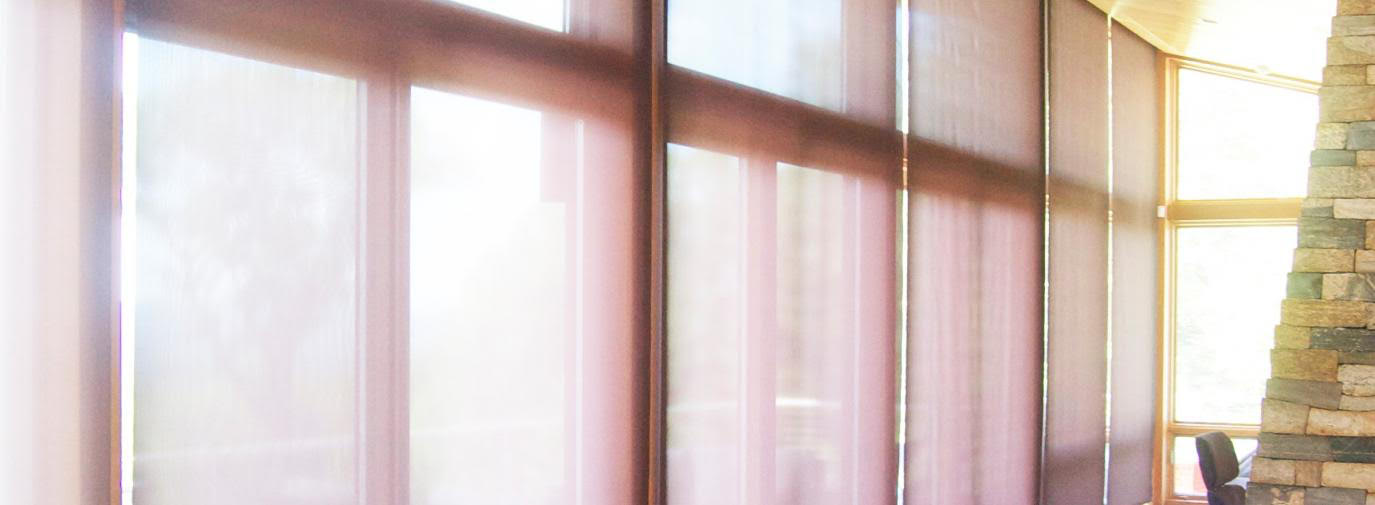
Earthshade Natural Window Fashions
Question from Jodi
Hi Debra,
I need to purchase window treatments for my home, and I see Earth Shades and The Shade Store listed on your site. Have you, or anyone you know, purchased shades from either of these places? I don’t see any comments on your site, and I can’t find many reviews online.
Thanks for your work!
Debra’s Answer
Rowena Finegan at Pine Street Natural Interiors recommends Earth Shades very highly. I saw some samples she has in her shop recently and they were beautiful. Very high quality and totally toxic-free. They also aware of and serve the needs of people with MCS.
I have no personal experience with The Shade Store.
Readers? What are your experiences with either of these shades?
Choosing Materials for a Toxic-Free Sofa at STEM

I’m customizing this “Nein” sofa at STEM.
I just added STEM to Debra’s List last week after a reader asked about it, and now I feel the need to give further guidance after receiving another question from a different reader.
I love your questions because I can see what you don’t know and how much I need to explain so you can get a good result.
And I learned this particular reader couldn’t tell which of all the choices were more or less toxic-free. So I’m going to explain the choices here.
First of all, the folks at STEM have been making less toxic sofas for about ten years, at Viessi. They have been listening to customers. And they know their stuff.
They will send you free samples of the materials so you can look and feel and test them out before you buy.
You can sit on whatever you order for 100 days and they will take it back if you don’t like it, and they will pay the shipping. They finance.
The baseline at STEM is: No fire retardants. No stain repellants. Beyond that, you can adjust the purity and the price by the materials you choose.
The starter price for a sofa is $1750. I’m going to choose this sofa and customize it with different materials and give you prices. This is the “Nein” sofa.
First you are asked to choose a FILLING. Options are:
- Poly Foam Cushions + Fiber Pillows
- Poly Foam Cushions + Down Pillows
- Organic Natural Latex Frame & Cushions + Wool Fiber Pillows
As you choose each option it will tell you the new price, and calculate a new monthly payment. No fill comes with the base price.
- Poly Foam Cushions + Fiber Pillows = $3091
- Poly Foam Cushions + Down Pillows = $2816
- Organic Natural Latex Frame & Cushions + Wool Fiber Pillows = $3454
Next you choose the FABRIC. A variety of polyester fabric are included in the base price. Click +MORE and use the “Eco-Friendly” menu to choose 100% Natural Content or Organic Fibers. There is one choice that comes included in the base cost (hemp and cotton with 15% recycled polyester—sorry, STEM, that’s not 100% natural). Other actually 100% natural options are 100% hemp (+276) or a linen/cotton blend (+480). The organic choices are also linen/cotton and also +$480, so here I would go with the organic linen/cotton. It’s only another $200. But you can save $480 if you’re willing to go non-organic and have that 15% recycled polyester.
So totaling this up, the range is
$2816 for the PolyFoam and Down Pillows with the standard Hemp/Cotton/polyester fabric
$3934 for the Organic Natural Latex Frame & Cushions + Wool Fiber Pillows with organic fabric
About $1000 difference.
Now here’s the difference in toxic exposure.
The big difference is in the filling,
- Poly Foam Cushions + Fiber Pillows = Seat pillows are filled with “CertiPUR-US certified poly foam” That’s regular polyurethane foam. Read more about CertiPUR-US here. Back pillows are filled with polyester.
- Poly Foam Cushions + Down Pillows = Seat pillows are filled with “CertiPUR-US certified poly foam” That’s regular polyurethane foam. Read more about CertiPUR-US here. Back pillows are filled with down feathers that are byproducts of the food industry.
- Organic Natural Latex Frame & Cushions + Wool Fiber Pillows = The entire frame, arms, and seat cushions with certified organic natural latex, made from the sap of rubber trees, with no harsh chemicals. They wrap the latex and fill the back pillows with domestic OEKO-tex certified wool which follows sustainability and cruelty free standards and is free of all chemical additives.
Remember the most toxic chemicals in a sofa are the fire retardants and the stain repellants. They are gone. Period.
Then there is the polyurethane foam fill, which is now only in the seat cushions, so it’s been reduced by half over a conventional sofa.
And then there is a choice of polyester fabric or all-natural or organic.
They do have clearance models, so you might be able to get a lower base price, and the prices also go up based on the design and size of the sofa.
I hope I’ve made this a little clearer and easier to for you to evaluate if this sofa company might be right for you. I do see there are good toxic-free choices here, but you need to choose them carefully.
Reducing Toxic Exposures Via Streamlining

I’ve mentioned in other posts that for the past year the big theme in my life has been streamlining, down-sizing, simplifying, getting to the essence of what is most important and needed in my life, in order to make more time and resources available for relationships, creative projects and other enjoyments of life.
But I also want to make the point that streamlining is a way to reduce toxic exposures as well.
In my response to a comment this week I said to a reader that she wasn’t condemned to toxic exposures from a cheap sofa because she couldn’t afford a natural sofa. I said she always had the choice to have no sofa at all.
While it may sound unusual to not have a sofa, I actually sold my lovely linen-covered, wool-stuffed sofa recently. I had this sofa custom-made about 20 years ago, so it wasn’t a question of it being toxic.
I sold my sofa because the reality was I hardly ever sat on it. It takes up a lot of space, it’s difficult to move, I have to pay storage fees at the moment to keep it, and I really didn’t need it.
I only got a sofa in the first place because of the idea that every home needs a sofa.
But I don’t.
And let me tell you, I feel free. I feel free to have what I need and to not have what I don’t need. Determined by me.
I remember years ago I looked around my house and felt overwhelmed by all the things I had which needed to now be replaced by nontoxic alternatives. But not everything needs to be replaced.
I just want to make the point here that sometimes the toxi-free alternative can be NOTHING.
Confused About Labels on Leather Boots

Duckfeet boots online
Question from Heather
Hi Debra,
I have finally found non toxic GOTS certified sneakers by ETIKO and they are amazing aside from the shipping price. Sandals from Soft Star Shoes work for summer with their sandals. I fit in the kids size of rain boots from Stonz. Now I am hunting for winter boots and stuck. I looked at Duckfeet and feel confused with their wording. I called to get clarification but at times people say “eco friendly” leather and other times vegi tanned. Can you please explain if salt tanning is what is toxic in leather? Is “eco friendly” and “Zero Chrome” leather going to still be toxic free for the most part. Would you endorse Duckfeet?
Debra’s Answer
One of the problems in choosing materials is inconsistent labeling.
This is why it’s best to choose materials based on details rather than buzzwords, unless it’s a brand name, like Hoween Leather , which stands for meeting a certain standard that they have defined.
“Vegetable tanned” leather is the preferred process. And it’s becoming more and more available.
I don’t see any leather called “salt tanned.”
“Zero Chrom” leather might be OK but might contain some chemicals other than chrome.
The Duckfeet website says, “Vegetable-tanned leather midsoles and uppers give feet space to breathe and naturally transport moisture away from the skin. All-natural, shock-absorbing crepe rubber is used for the outsole, which can be re-soled…Each pair of Duckfeet is handcrafted in Europe without the use of synthetic materials.” That seems very clear to me. Vegetable-tanned.
Sounds good to me. Ask if they put any toxic substances on the shoes to waterproof the leather.
“Nontoxic Vinyl Plank Flooring”?????
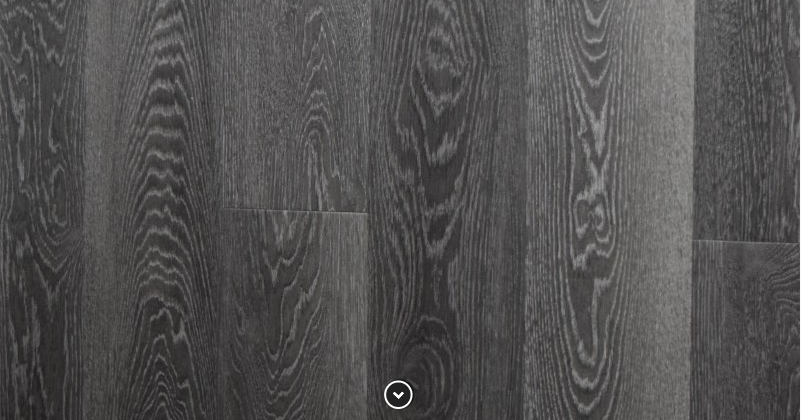
CORRECTION
On 23 January 2018 I published the question and answer below. I have to admit I had all of my attention on the claim of this vinyl flooring being “nontoxic” and so didn’t actually look at the flooring itself.
Another reader contacted me about this same product but asked the question in a different way.
So now I want to give a different answer, which is about the product, instead of the claim that it is nontoxic.
These “vinyl planks” are made from a fairly new material called wood polymer composite (WPC). It is a form of vinyl that combines real wood fibers and PVC to create a flooring material that is dimensionally stable, resilient, and waterproof. I can see the benefits of doing this, as this is much better performance than wood.
It’s a “click” installation, which means it is one piece with a tongue-and-groove interlocking edge and an underlayment.
I called a manufacturer of WPC flooring and the materials are, from top to bottom:
- Polyurethane finish
- PVC top layer
- PVC+wood composite core
- polyurethane foam cushion on the bottom
So it’s all petroleum except for the wood particles.
Now question from the second reader was: it’s vinyl, is it outgassing phthalates?
Well, no. It’s hard vinyl so it wouldn’t have phthalates.
So is it OK to use if it’s not outgassing phthalates?
And that’s the difficult question.
It has long been known that the vinyl chloride monomer itself is hazardous to health. After studies in the 1970s showed that VCM causes cancer, the manufacturing process was completely closed to eliminate worker exposure. But consumers don’t have that same protection. According to the Centers for Disease Control, it is possible for extremely low levels of VCM to remain in PVC and be released from the plastic during use. These levels are considered to be totally harmless by health authorities for exposure through food packaging and beverage bottles. However, food packaging is a single exposure, which is not the same as the repeated exposure that happens from a consumer product (such as vinyl flooring). The current Occupational and Health Administration (OSHA) permissible exposure limit is 1 part vinyl chloride per million parts of air over an 8-hour workshift—an infinitesimal amount.
So it’s within the realm of possibility that enough VCM could outgas over time and be trapped and concentrated within a room or a home that it could be a problem.
But beyond this is my consideration about biocompatibility. And this is actually my #1 concern. Toxicology doesn’t address this. There is an exchange between our bodies and the natural world that happens in ways we aren’t even aware of or understand. But it happens.
Wood feels good to me. Plastic doesn’t. And I just wouldn’t lay 2000 square feet of carcinogenic VCM plastic in my house, regardless of measurable outgassing or not.
So that’s my answer about WPC.
Debra 🙂
This week I received a question from a reader. In the context of asking a completely different question, she said. “We are going to replace the current flooring with non toxic vinyl plank flooring.”
Nontoxic vinyl plank flooring????
I wrote back to her and asked what vinyl flooring she thought was nontoxic and why.
She said, “We are using GoHaus Luxury vinyl planks. They are floorscore certified. Have I been tricked? Is this not a safe product to use?”
And here is my response to her.
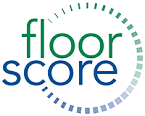 FloorScore is an indoor air quality certification for for hard surface flooring materials, adhesives, and underlayments.
FloorScore is an indoor air quality certification for for hard surface flooring materials, adhesives, and underlayments.
It was developed by Scientific Certification Systems in partnership with the Resilient Floor Covering Institute (RFCI), a leading industry trade association of flooring manufacturers and suppliers. FloorScore qualifies flooring products for many green building programs, including LEED v4, WELL, BREEAM, and CHPS.
Floorscore is administered by the RFCI, with SCS as the exclusive certification body.
Their website says “By testing representative product samples and focusing strictly on the relevant chemicals of concern, we deliver the results you need without excessive testing.” So they are not testing for all chemicals.
The standards for FloorScore are outlined in Indoor Air Quality Product Performance Standard for Building Interiors.
I looked through this document, but could not find any actual standard that tells what chemicals are being tested for and what amounts are allowed. What it says is:
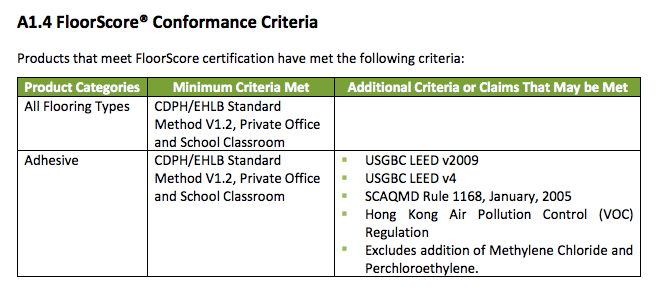
So I found the CDPH/EHLB Standard Method. Version 1.1. I couldn’t find version 1.2 online. Here’s the list of what they test for.
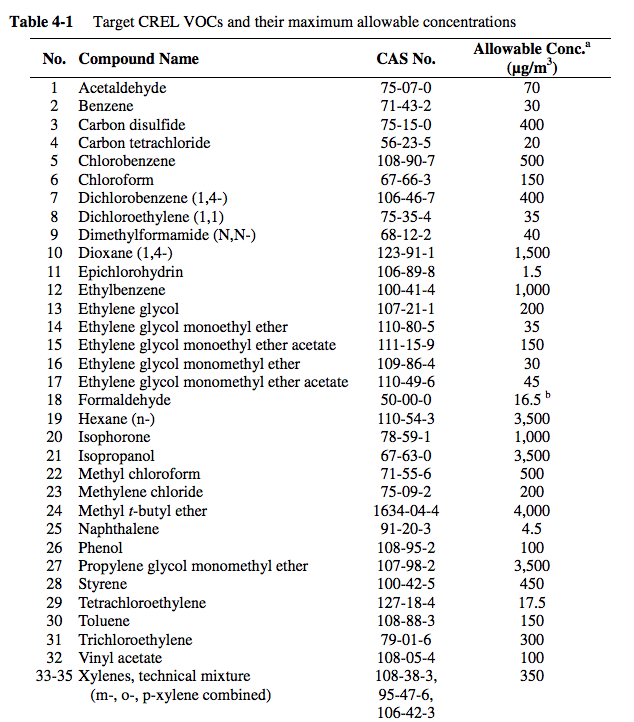
What needs to be tested for PVC vinyl flooring is PHTHALATES. There are no phthalates on this list of chemicals being tested.
So they can certify vinyl flooring that outgasses phthalates to “meet their standard.”
GREENGUARD does the same thing. They certify crib mattresses that outgas phthalates by not testing for them.
So I would not consider this FloorScore certified PVC flooring nontoxic.
This type of certification program where the industry gets together and certifies their products to be acceptable for indoor air quality is suspicious to me. I often see these programs (the carpet industry has one too) certifying products I would not recommend based on research of the toxicity of the materials they are using.
Medley
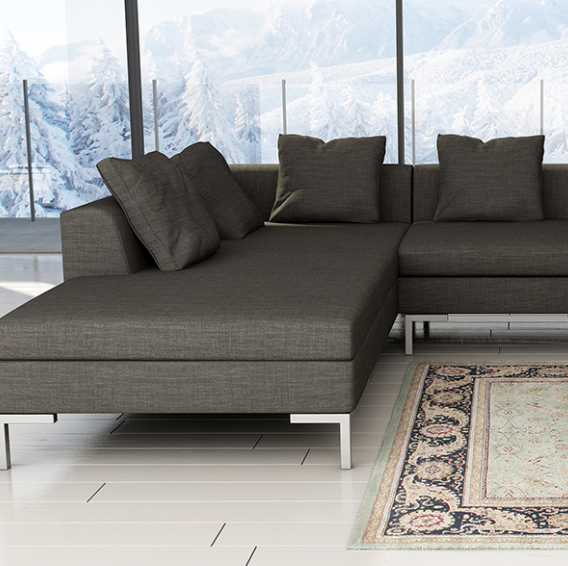 Custom sofas built with your choice of materials—made in 4 weeks in Los Angeles. “None of our fabrics have fire retardants or stain finishes and we even offer 100% natural like cotton, hemp and wool, and some certified organic textiles as well..” This is a morph of the custom sofas that used to be at Viesso, by the original founders. “Realizing there is still so much more to do to disrupt the furniture industry, we knew it was time to break off our collection as its own brand.” Like Viesso, Medley lets you customize every aspect of your sofa, which gives you a lot of choice and requires that you make good choices. Standard materials are better than average but not really toxic-free, so skip those and go for the natural latex, organic cottons, They will send samples, and let you live with the finished sofa for 100 days. Free shipping (both ways if you return it). And they finance.
Custom sofas built with your choice of materials—made in 4 weeks in Los Angeles. “None of our fabrics have fire retardants or stain finishes and we even offer 100% natural like cotton, hemp and wool, and some certified organic textiles as well..” This is a morph of the custom sofas that used to be at Viesso, by the original founders. “Realizing there is still so much more to do to disrupt the furniture industry, we knew it was time to break off our collection as its own brand.” Like Viesso, Medley lets you customize every aspect of your sofa, which gives you a lot of choice and requires that you make good choices. Standard materials are better than average but not really toxic-free, so skip those and go for the natural latex, organic cottons, They will send samples, and let you live with the finished sofa for 100 days. Free shipping (both ways if you return it). And they finance.
VOCs from Consumer Products Now Produce more Smog Than Cars
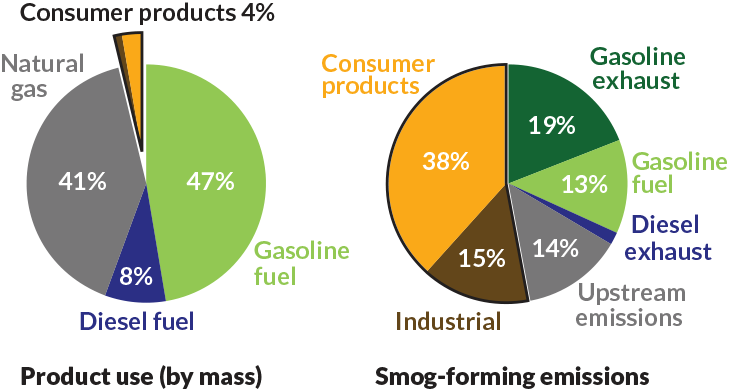
For decades, the focus on the source of outdoor air pollution has been on emissions from burning fuel from automobiles and factories.
But a new study shows “In urban areas, emissions from consumer goods such as paint, cleaning supplies and personal care products now contribute as much to ozone and fine particulate matter in the atmosphere as do emissions from burning gasoline or diesel fuel.”
Apparently programs to reduce pollution from car exhaust has been so successful that researchers are now able to see the impacts of other sources.
The study focused on VOCs that are derived from petroleum. Some VOCs can be harmful when directly inhaled, but they can also react with other molecules in the air to create ozone and other components of smog.
“15 times as much oil and natural gas is used as fuel than ends up in consumer products ranging from soaps, shampoos and deodorants to air fresheners, glues and cleaning sprays. And yet these everyday products were responsible for 38 percent of the VOC emissions, the researchers found, while gasoline and diesel emissions accounted for only 33 percent.”
SCIENCE NEWS: Household products make surprisingly large contributions to outdoor air pollution
Mango Wood
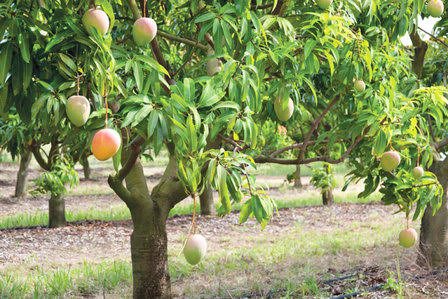
Question from Bonnie Johnson
Hi Debra,
I have been shopping for a new coffee table for my living room. I have noticed a lot of furniture made with mango woods. They are sold at Pier 1 and Cost Plus etc. Are they safe?
Debra’s Answer
Mango woods a new “sustainable” choice for furniture, as an alternative to traditional woods like oak and maple.
Mango trees are abundant in India, Southeast Asia, Mexico, Brazil and Australia, where mango is a popular fruit. In fact, mangoes are actually the most popular fruit in the world. I love them and often eat them myself.
Mango wood is the byproduct of an already thriving industry,
Once the trees get too tall to easily harvest the fruit, or stop bearing fruit altogether, they are harvested for timber and a new generation of trees is planted.
Harvesting wood that was previously burnt or left to break down naturally provides extra income to mango farmers, and gives furniture manufacturers an affordable hardwood that has the strength to bear weight needed for tables and chairs, yet is soft enough to work with easily.
Mango wood also happens to be water resistant.
It requires monthly polishing to avoid cracking due to dehydration.
Some natural ways to protect your mango wood.
Apparently mango wood is other [chemically treated before furniture manufacturing to prevent fungus attack]. Chromiated Copper Arsenate (CCA) and Copper Come Boron (CCB) wood preservatives are used, CB being less toxic.
It’s likely virtually all mango wood is treated and unlikely that they will tell you this at the point of sale.
However, these preservatives are not volatile and the particles could be contained with several coats of a toxic-free wood finish.






